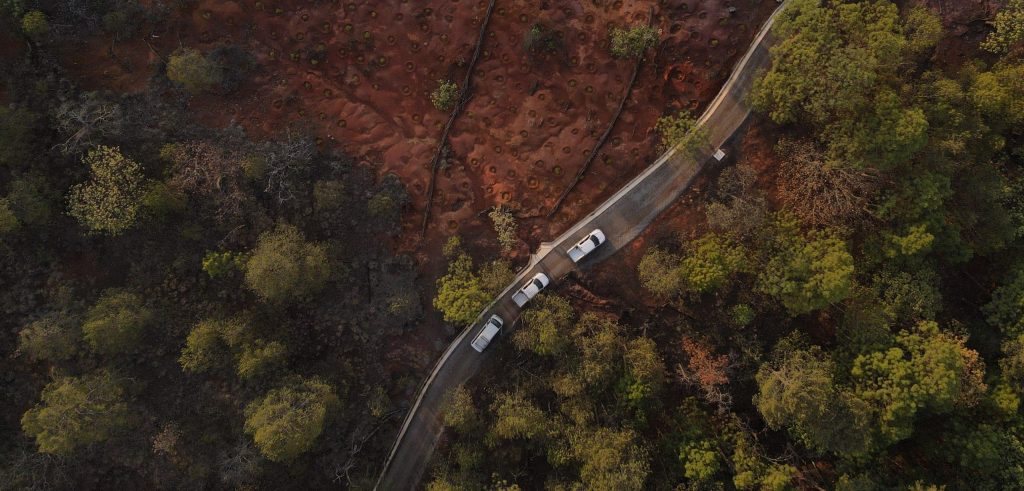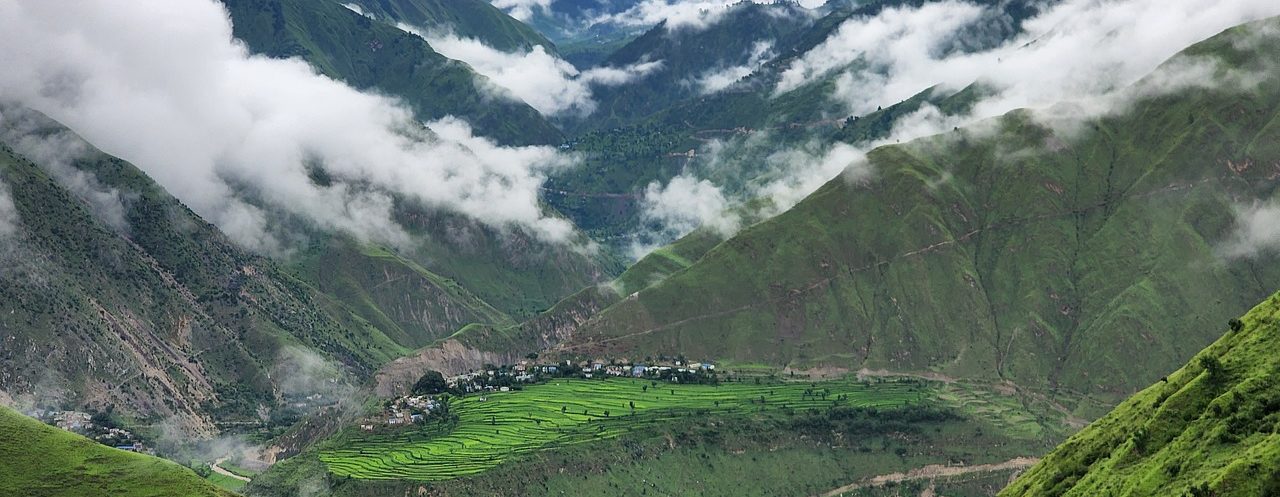This impact story was originally published by LandScale here.
When I think back to the summers of my childhood in Canada, of family outings driving along quiet country roads surrounded by farmland, one thing that I will never forget is the car windshield becoming coated in insects, so much so that you couldn’t see the road. Gruesome? Absolutely. But it was also a sign of a healthy ecosystem and an abundance of life in the Canadian prairies. Now, decades later, when I visit during the summer, the windshield of our car remains clear, with almost no insects meeting an untimely end when we drive through the countryside.
The term shifting baselines syndrome emerged in 1995 to describe how our perception of what is normal and natural adjusts against a backdrop of ecological decline. A fisherman 50 years ago might have thought his waters were abundant – without knowing that his ancestors’ catch was double or triple what he caught. And what of my perception of healthy ecosystems in Canada? The patchwork of tilled, rectangular fields that flanked the highway we drove down had been shaped by human beings over hundreds of years. The disappearance of insects likely started decades before I took notice – the ecosystem a mere shadow of what it had been a century ago.
If it is so easy for human beings to adjust to a new ‘normal’, shifting our baseline of what a healthy natural environment looks and feels like, how do we turn the tide on the decline of nature globally? How do we ensure we don’t shift our baselines as we work to improve sustainability?
At LandScale, we champion the landscape approach as a key tool in helping accelerate progress towards resilient landscapes where nature and people thrive. And we believe that a ‘landscape level’ performance baseline is a key component of successful landscape approaches. Capturing the starting point of your journey towards sustainability is essential if you want to track progress over time and ensure that the actions you are taking to improve sustainability are having a genuine impact.
But what is a landscape baseline, and why is it so important?
Identify your blind spots
Scott Henderson, Vice President and Sustainable Landscapes Lead for the Americas Field Division at Conservation International, suggests that it’s helpful to think of a baseline like a blueprint for building a house. “Without a blueprint, how do you know how deep your foundation needs to be, or where your walls are going to go?” he says. “I think one problem that we come up against again and again in sustainability and conservation is that priorities are set based on a very narrow set of criteria, without a comprehensive picture of what’s actually happening on the ground. Knowing the starting point for an initiative is key to determining if actions are having the intended effect or inadvertently creating issues in areas that haven’t been considered.” Henderson suggests that using a tool like LandScale to set a baseline is similar to a feasibility assessment. “It provides you with a comprehensive snapshot in time of where things stand across the main dimensions that define sustainability.”
“Knowing the starting point for an initiative is key to determining if actions are having the intended effect or inadvertently creating issues in areas that haven’t been considered.”
When RECOFTC began their baseline assessment of the Sacred Himalayan landscape in Nepal, they were focused on looking at the landscape from the perspective of its potential for hydroelectricity production and role in watershed management. But as the assessment progressed, their focus evolved. “Once we delved into the assessment, we realized that it was more important to look at overall sustainability in the landscape” says Mamta Lama, Program Officer for Landscapes in a Changing Climate at RECOFTC. Covering over 450,000 hectares, and flanked by five protected areas – Langtang National Park, Langtang National Park’s buffer zone, Shivapuri Nagarjun National Park, Shivapuri Nagarjun National Park’s buffer zone and Gaurishankar Conservation Area in Nepal – the landscape encompasses a wide diversity of ecosystems and communities. “We found that there is a lot of biodiversity in the landscape, and there are opportunities to better coordinate activities between park authorities and local communities,” says Lama.
The LandScale assessment also highlighted that many communities in the landscape required urgent support with building up essential services like healthcare and access to education. “80% of the total population were lacking access to health services, highlighting a significant healthcare accessibility issue” says Lama. “We also found significant disparities in education which need to be addressed.” Without a holistic assessment, none of these issues would have come to light, and RECOFTC’s landscape action plan may have had significant gaps.
Catalyze collaboration
Experts in landscape-level sustainability agree that multi-stakeholder coalitions are a key component to building a successful and lasting landscape initiative. This is also one of the most challenging things to do, according to Henderson. “One of the most difficult aspects of getting a landscape-scale initiative off the ground is getting everyone to agree on what even constitutes sustainability.” But building common understanding across stakeholder groups is essential to creating real – and lasting – change. “These are all the people who you’re asking to change their behaviours, their lives,” Henderson explains. “If you don’t have a shared understanding of what sustainability even involves, you’re going to have a lot of difficulty building a coalition that’s functional.”

This is one of the ways in which setting a landscape-level baseline can help. Taking a holistic approach helps to build a clear picture of the overall health of the landscape. And crucially, doing this requires the involvement of all landscape stakeholders – from NGOs and local government to producers and businesses. “Through the process of validating our results across LandScale’s four pillar framework, we had to identify local stakeholders to review the results from a local perspective,” explains Lama. “This has helped us to build a better understanding of the people we need to engage if we decide to invest in or set up programmes to strengthen adaptation to climate change across the four pillars.” This experience is echoed by many users of LandScale, who say that the process of conducting a baseline assessment is often the first step in building a truly collaborative, multi-stakeholder initiative.
Spend now, save later
Compiling all the data to set a credible landscape-scale baseline is no easy task, and it can seem like it comes with a significant cost – in terms of both money and time. But Henderson suggests this is a red herring. “With a tool like LandScale, a lot of the hard work has been done for you already since the framework of field-tested indicators and metrics are provided and are also relatively easy to measure,” he explains. “It would be much more cost and time intensive to start from scratch.” While it is hard to put an exact number on the cost of a LandScale baseline assessment, since a lot is dependent on local context, the system has been designed to reduce overheads as much as possible, and in a way that can easily be built into funding proposals.
Setting a baseline gives you the information you need to make a compelling case for investment since it allows you to set a clear action plan underpinned by robust data
Having a comprehensive view of the strengths, weaknesses and opportunities within your landscape, as well as a shared vision for the future also makes it easier to engage potential donors and investors. “It’s very difficult to promote a landscape initiative that doesn’t have a shared vision or a basic idea of what the conditions are,” says Henderson. “Setting a baseline gives you the information you need to make a compelling case for investment since it allows you to set a clear action plan underpinned by robust data.”
At RECOFTC, Lama says they have taken things a step further and are actually using the LandScale assessment framework to identify and set landscape-scale sustainability goals, which has in turn helped to make their strategic plan more robust. She finds it helpful to think of the four LandScale pillars – ecosystem health, human wellbeing, governance and production – as adaptation capital. “When we assess the vulnerabilities within a landscape, we see them as natural, social, human and financial capital which we can adapt to effectively address the impacts of climate change.” This, she says, helps the RECOFTC team to identify potential solutions that can hopefully be leveraged to bring investments and funding into the landscape.
Accurate and credible data on landscapes is also becoming an increasingly important requirement for making performance claims in new frameworks like the Science Based Targets for Nature. “Companies investing in landscape action need to establish performance baselines early to be able to accurately track progress over time,” says Patrick Mallet, Director of Innovations at the ISEAL Alliance, which is aligning practitioner views on landscape monitoring and claims. “With reporting frameworks like SBTN requiring them, baselines are no longer a nice to have.”
The pilot period for SBTN wrapped up in late 2023, and is expected to launch formally this year. Target 3, which focuses on landscape engagement, requires companies to show a baseline assessment of the status of social and ecological conditions exists in the landscapes where they operate. This will increase demand for landscape-level data, and will also encourage companies to engage with landscape initiatives which have already set a baseline.
Create lasting change
A landscape-level baseline is the first step in a much longer process, and will help us avoid ‘shifting baselines’ at landscape-scale. Tracking progress over time is essential to determining if the interventions and investments which have been established are genuinely addressing systemic issues like deforestation, biodiversity loss and poverty at the pace and scale needed.
For the Sacred Himalayan landscape, the immediate next step is finding donors and investors who want to join RECOFTC on their sustainability journey. “We envision a dynamic partnership with investors who recognise the long-term value of preserving this sacred landscape and see the intrinsic worth of preserving its natural and cultural heritage,” Lama says. She stresses that while financial returns are also important, donors and investors need to see beyond an immediate return on investment and recognise that the journey they’ll be taking won’t be short, but will be rewarding in the long term.
